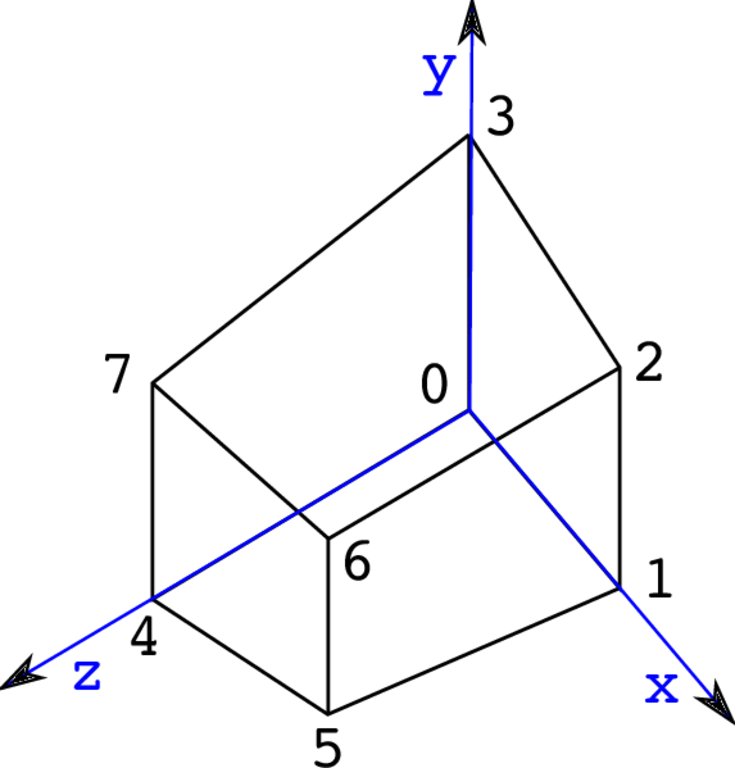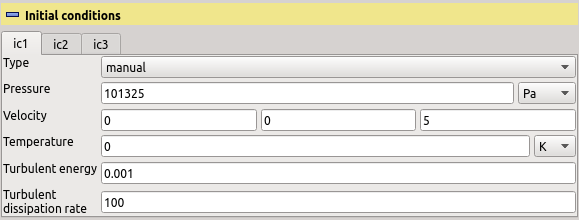Previous: Using blockMesh generator Up: Using blockMesh generator Next: Running blockMesh
This is an automatically generated documentation by LaTeX2HTML utility. In case of any issue, please, contact us at info@cfdsupport.com.
File blockMeshDict
- Let us go through the file:
# less $FOAM_RUN /cavity/system/blockMeshDict/*--------------------------------*- C++ -*----------------------------------*\ | ========= | | | \\ / F ield | OpenFOAM: The Open Source CFD Toolbox | | \\ / O peration | Version: dev | | \\ / A nd | Web: www.OpenFOAM.com | | \\/ M anipulation | | \*---------------------------------------------------------------------------*/ FoamFile { version 2.0; format ascii; class dictionary; object blockMeshDict; } // * * * * * * * * * * * * * * * * * * * * * * * * * * * * * * * * * * * * * // - Header of OpenFOAM file
convertToMeters 0.1;
- Parameter convertToMeters allows the whole mesh scaling

Figure: A general blockMesh hex numbering.
vertices ( (0 0 0) (1 0 0) (1 1 0) (0 1 0) (0 0 0.1) (1 0 0.1) (1 1 0.1) (0 1 0.1) );- In section vertices there are written coordinates (points) of blocks of the mesh
blocks ( hex (0 1 2 3 4 5 6 7) (20 20 1) simpleGrading (1 1 1) ); - In section blocks there are defined all blocks of the mesh; hex(0 1 2 3 4 5 6 7) (20 20 1) means hexahedral of eight vertices (0-7) according to order in vertices. The block is divided into 20 x 20 x 1 cells
- Parameter simpleGrading allows refinement setting in the local directions (x y z); (1 1 1) = means uniform distribution in all directions
The local directions for the block hex(0 1 2 3 4 5 6 7) are defined by following point couples:- direction x is defined by points with labels 0 -> 1
- direction y is defined by points with labels 0 -> 3
- direction z is defined by points with labels 0 -> 4
edges ( );
- In section edges there are defined curved edges connecting block vertices
- If nothing is specified here, blockMesh uses lines
boundary ( movingWall { type wall; faces ( (3 7 6 2) ); } fixedWalls { type wall; faces ( (0 4 7 3) (2 6 5 1) (1 5 4 0) ); } frontAndBack { type empty; faces ( (0 3 2 1) (4 5 6 7) ); } ); - In section boundary there are defined types of boundaries
mergePatchPairs ( ); // ************************************************************************* //
- In section mergePatchPairs there can be defined boundaries to be merged
Previous: Using blockMesh generator Up: Using blockMesh generator Next: Running blockMesh







![Node46 33 [*]](https://www.cfdsupport.com/wp-content/uploads/2022/02/crossref.png)

